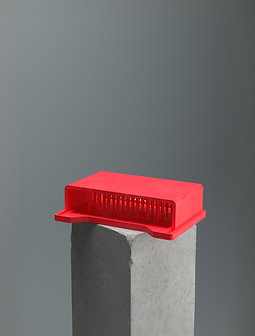1 day ago2 min read
3 days ago4 min read
5 days ago5 min read

Updated: May 5

Ever wondered how scientists study the way cells move? Understanding cell migration is crucial for fields ranging from cancer research to wound healing. One of the most fundamental, accessible, and widely used methods in the lab is the in vitro scratch assay. It's a powerful technique that, despite its simplicity, offers profound insights into cellular behavior.
Imagine a crowded room (a monolayer of cells grown in a dish). The in vitro scratch assay involves making a clear path, or "scratch," through this crowd. Scientists then watch closely, often using microscopy, as the cells at the edge of the scratch move in to close the gap. By measuring how quickly this gap closes, researchers can quantify cell migration.
While newer techniques exist, the in vitro scratch assay remains a go-to method for several compelling reasons:
Cost-Effective & Accessible: It requires basic cell culture equipment found in most labs, making it inexpensive and easy to implement.
Mimics Real Life: The process somewhat mirrors how cells move to heal a wound in vivo.
Studies Interactions: It's particularly great for investigating how cell-cell interactions and cell-matrix interactions influence migration, which can be disrupted in other methods.
Compatibility: The assay works beautifully with live cell imaging, allowing scientists to watch migration happen in real-time and even track specific proteins or events within the moving cells.
Versatility: It can be used to study the collective movement of a whole population or, combined with techniques like transfection (introducing specific genes), to analyze the migration of individual cells.
No technique is perfect, and the scratch assay has a few considerations:
Scratch Variability: How the "scratch" is made (e.g., with a pipet tip) can vary slightly between experiments or researchers. This variability in scratch width and consistency can potentially affect standardization and reproducibility, so careful technique is important. Standardized scratch making tools like CellCut could help.
No Chemotaxis: It doesn't measure chemotaxis (movement towards a specific chemical signal) like some other methods do.
Time: The process can take several hours or even overnight for cells to migrate and close the gap.
The in vitro scratch assay is a cornerstone technique for studying cell migration in vitro. Its simplicity, cost-effectiveness, and ability to provide relevant insights into complex biological processes like wound healing and the effects of cell-cell and cell-matrix interactions ensure its continued importance in cell biology research. It’s a classic method that elegantly reveals the dynamic dance of cells.
References
Liang, CC., Park, A. & Guan, JL. In vitro scratch assay: a convenient and inexpensive method for analysis of cell migration in vitro. Nat Protoc 2, 329–333 (2007). https://doi.org/10.1038/nprot.2007.30

